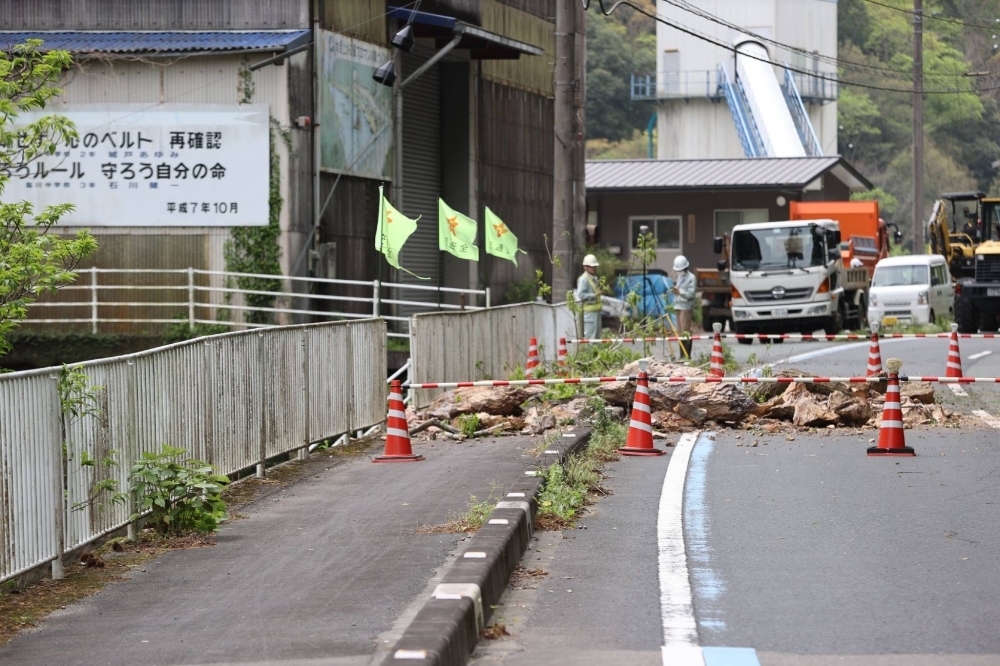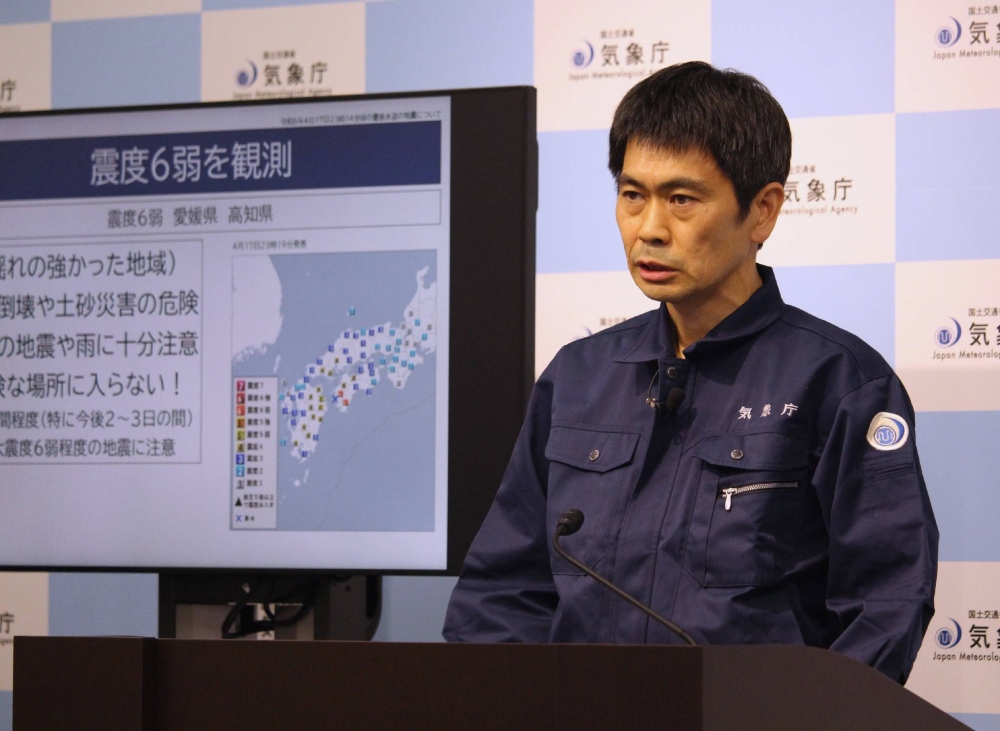A magnitude 6.6 earthquake, measuring a lower 6 on Japan’s seismic intensity scale, struck off the west coast of Shikoku island on Wednesday night, but authorities reported no link to a potential Nankai Trough quake.
There was no tsunami from the quake, which struck at 11:14 p.m., and reports suggested only minor injuries and damage.
The quake measured a lower 6 — the third highest level — in the Ehime Prefecture town of Ainan and the Kochi Prefecture city of Sukumo. Striking at a depth of 39 kilometers, its epicenter was in the Bungo Channel, a strait separating the islands of Kyushu and Shikoku.
The temblor left nine people with light injuries in Ehime, Kochi and Oita prefectures, authorities said Thursday morning. Minor damage in some areas, including broken water pipes, fallen streetlights and a landslide on a national roadway, has been reported, but no fires were reported in the quake’s aftermath, they said.
Among the injured, a woman in Ainan in her 70s was taken to a hospital after collapsing, according to a local fire department.
No abnormalities have been detected at Shikoku Electric Power’s Ikata nuclear power plant in Ehime Prefecture, according to the Nuclear Regulation Authority.
The Meteorological Agency initially reported the quake as magnitude 6.4, but later revised the figure to 6.6.
Satoshi Harada, head of the agency’s earthquake and tsunami monitoring division, told a news conference early Thursday that the magnitude of 6.6 is below the 6.8 threshold that would necessitate an investigation into any relation with a Nankai Trough earthquake. He added that while this quake doesn’t meet the criteria for further study in that context, the agency will issue updates and convene expert panels as needed.

A national road is blocked by fallen rocks on Thursday following a magnitude 6.6 earthquake in Ozu, Ehime Prefecture, the previous day.
| Jiji
Harada noted that seismic activity has remained heightened since the quake. The agency has advised residents of areas hit by the quake to be careful of seismic activity and heavy rainfall for the next week or so, as the risk of house collapses and landslides has increased in areas where the tremors were strong.
The quake has prompted anxieties regarding the possibility of an upcoming Nankai Trough earthquake, which typically occurs every 100-150 years, with the last one occurring 70 years ago.
The Nankai Trough, stretching from the Tokai region to offshore eastern Kyushu, is a hotbed of geological tension where the oceanic plate is subducting beneath the continental plate, accumulating strain at the boundary. Major earthquakes and tsunamis are expected when this tension releases suddenly.
“This earthquake was caused by a fault shift within the plate, which is deeper than the boundary between the plates,” Harada explained at the conference.
“At this point, we cannot say whether the probability of a Nankai Trough earthquake has increased or decreased due to this event,” he said. The agency will continue to closely monitor the region.
Relatively large earthquakes have occurred in the past in the vicinity of the Bungo Channel, including an earthquake with a maximum intensity of upper 5 in Oita Prefecture in July 2015.
According to NHK, this is the first time since 1996, when the current Japanese seismic intensity scale was introduced, that a tremor of a lower 6 or higher has been observed in Ehime and Kochi prefectures.
For those unaccustomed to large quakes, Wednesday night came as a huge shock.
In the town of Ainan, where the earthquake registered a lower 6, the impact was distinctly felt at a local convenience store. Several cup noodles and sake bottles toppled from the shelves. The clerk described the ordeal: “It started shaking suddenly, then my cell phone’s earthquake alert went off. The shaking felt like it lasted a long time, but I managed to hold on by clinging to my desk.”
At a nearby Japanese-style pub owned by Keiichi Fujisawa, 50, the tremor caused plates to crash down from shelves. “This was the biggest quake I have ever experienced,” he said. “I need to reorganize to ensure nothing dangerous falls next time.”
In the city of Seiyo, also in Ehime Prefecture, the quake’s intensity was recorded at a lower 5. At a restaurant there, four customers ducked under tables for cover. The owner, a woman in her 80s, expressed her shock. “It reminded me of the Great Hanshin Earthquake of 1995. I’ve received several calls checking in on me to make sure I’m safe.”
More information:
Information from Jiji added

